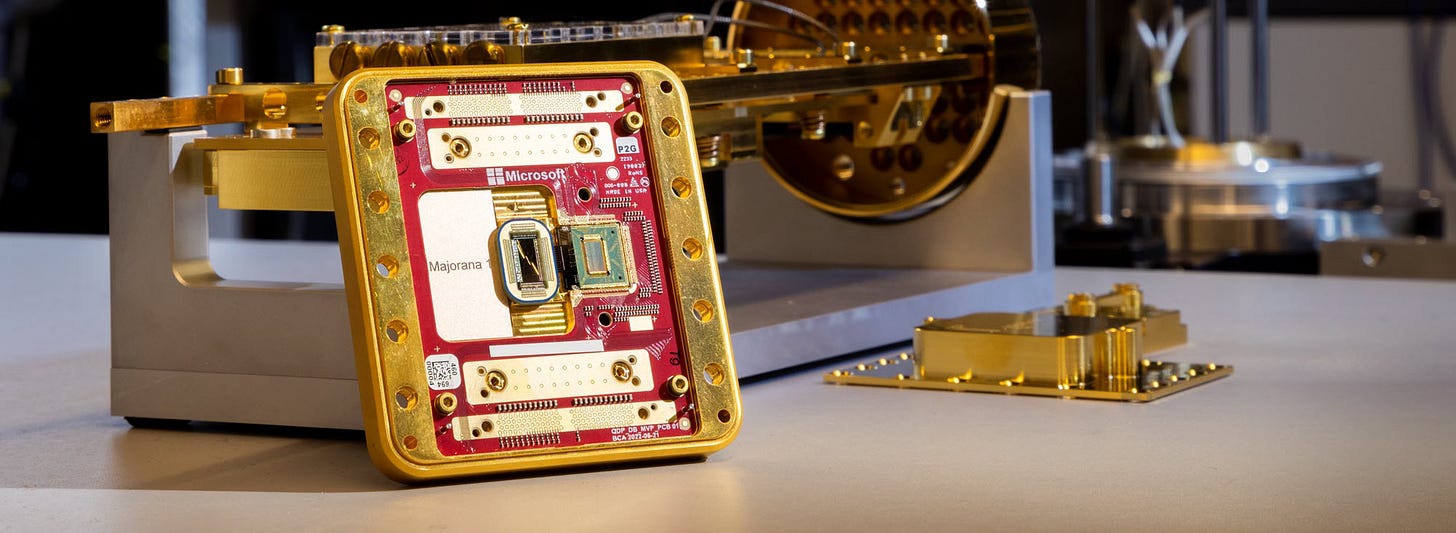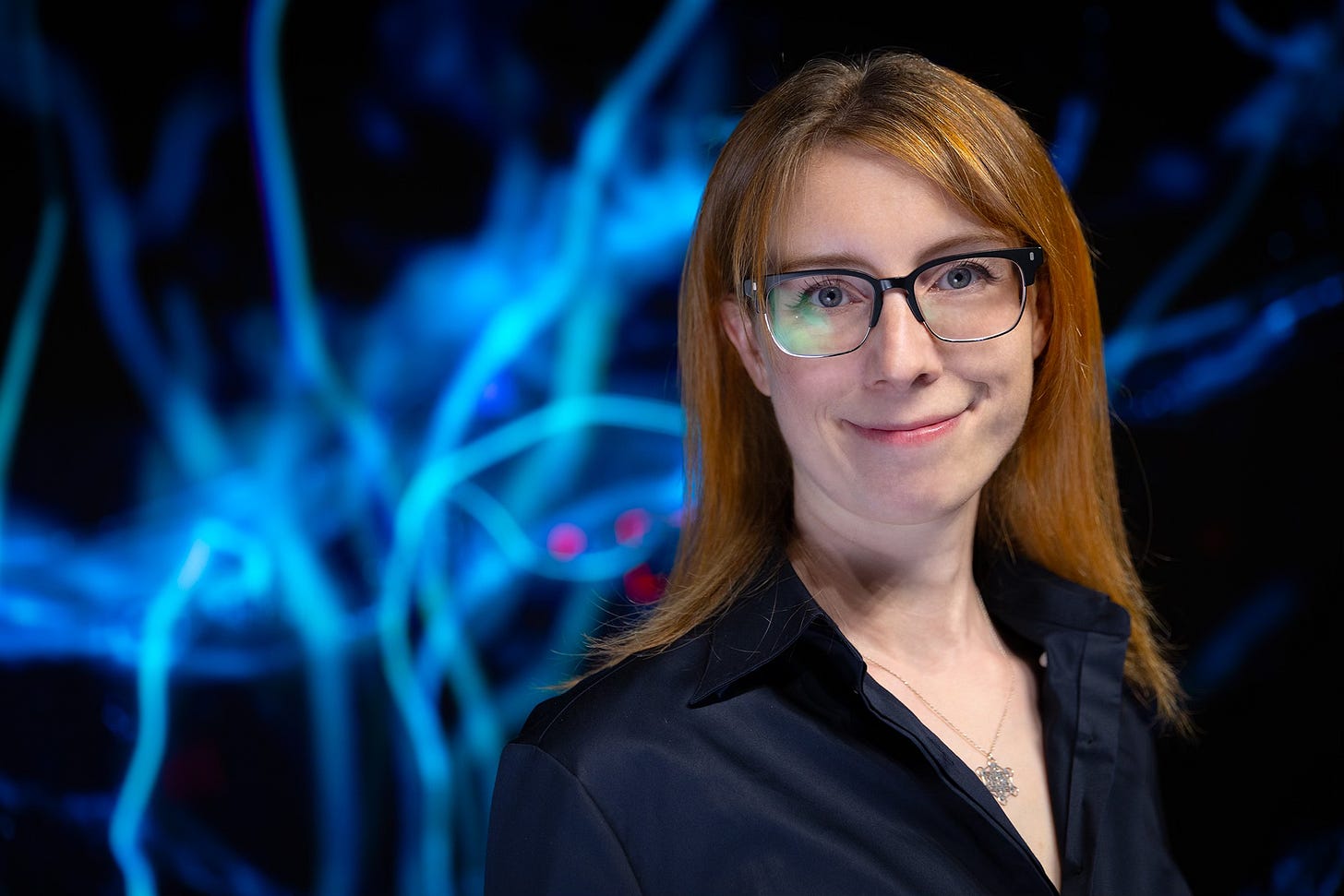Nirvanic: Microsoft's quantum chip could help AI consciousness
Majorana 1 chip is a "wow" -- promising to bring millions of qubits to the problem
This morning, Microsoft announced its new Majorana 1 quantum computing chip, and my reaction is, “wow.” My marketing director did this quick interview with me to help give you perspective.
Why is this Microsoft quantum chip important?
My hope is that this breakthrough will help Nirvanic advance our work on conscious AI. Microsoft has the hardware; we’re building the software—the foundation for agentic AI with conscious agency.
Conscious AI systems, including robots, will need millions of qubits to process complex real-world decisions. Right now, we’re working on a small proof-of-concept, exploring a quantum-conscious agent in a robotic system with just 50 to 100 qubits. To scale up to humanoid robots making real-time decisions, we’ll need far more. Today’s news is a step in the right direction.
How does Microsoft’s announcement fit into the broader quantum computing landscape?
Quantum computing companies differ in key ways—the number of qubits, how they connect, how quickly they operate, and how stable they are. Many are prone to noise and errors.
Microsoft claims its Majorana-based qubits are exceptionally stable and reliable, thanks to exotic Majorana particles, which are naturally resistant to environmental disturbances. If true, this could be a game-changer. It’s amazing they’ve been working on it for nearly 20 years.
How does this state of the art in quantum computing today compare to the early history of silicon computers?
Quantum computing today feels like the 1960s and 70s of classical computing—a time of experimentation and competing architectures. Back then, we didn’t know the best way to design a computer—how the CPU should connect to memory or even whether binary was the best approach. Eventually, we settled on the Von Neumann architecture. The same process is happening in quantum. Different companies are taking different approaches, but eventually, a dominant architecture may emerge.
For the layman, what are the basic differences between quantum computers today?
A key difference is how qubits are made.
Microsoft’s chip uses a topoconductor, a material that is both a semiconductor and a superconductor at the same time. This enables topological qubits, which could be far more stable than other types.
Xanadu and PsiQuantum use photonic qubits—pulses of light controlled by lasers.
Google, IBM and D-Wave rely on superconducting circuits operating at ultra-cold temperatures.
IonQ uses trapped-ion qubits, where individual atoms are suspended in electromagnetic fields and manipulated with lasers.
Microsoft’s approach stands out because it aims for better qubit stability with fewer errors, which is crucial for scaling quantum computers.
Will Nirvanic be testing all of the quantum computer types?
Yes. We need lots of qubits to run meaningful algorithms for real-world robotic control. We also need a quantum computer that is cloud-accessible. To my knowledge, Microsoft’s Majorana 1 is not yet available for commercial use, but we’d love to partner when it is.
We’re casting a wide net—testing our conscious AI algorithms on multiple quantum platforms. Our goal is to test if quantum physics itself is linked to consciousness—not just a specific type of quantum computer. As quantum chips scale to hundreds or thousands of qubits, pioneers will develop new quantum algorithms and discover valuable applications - hopefully us!
How does Microsoft’s announcement compare to Google’s Willow a few weeks ago?
I’m excited about both platforms. They take different approaches, but that’s great news for us. We don’t know yet which quantum hardware will best support our software, so we’re testing them all! For software developers like us, hardware competition makes everything better.
What is your background in quantum computing?
I hold a PhD in experimental physics specializing in superconducting components for quantum computers. I’ve worked in the quantum industry, notably at D-Wave, and co-authored several patents in quantum processing, including applications of QPUs for neural imaging analysis. My research includes multiple publications on quantum computing, including a Nature paper on quantum annealing. Currently, I’m developing quantum algorithms to test Nirvanic’s conjecture on quantum-conscious agency in robotic systems.
Got any quantum questions? Ask us on X!
Now! Back to the consciousness research… 🔬
Suzanne






Great idea to test quantum computing-based decision making and reasoning as a simple model of the human mind.
It's becoming clear that with all the brain and consciousness theories out there, the proof will be in the pudding. By this I mean, can any particular theory be used to create a human adult level conscious machine. My bet is on the late Gerald Edelman's Extended Theory of Neuronal Group Selection. The lead group in robotics based on this theory is the Neurorobotics Lab at UC at Irvine. Dr. Edelman distinguished between primary consciousness, which came first in evolution, and that humans share with other conscious animals, and higher order consciousness, which came to only humans with the acquisition of language. A machine with only primary consciousness will probably have to come first.
What I find special about the TNGS is the Darwin series of automata created at the Neurosciences Institute by Dr. Edelman and his colleagues in the 1990's and 2000's. These machines perform in the real world, not in a restricted simulated world, and display convincing physical behavior indicative of higher psychological functions necessary for consciousness, such as perceptual categorization, memory, and learning. They are based on realistic models of the parts of the biological brain that the theory claims subserve these functions. The extended TNGS allows for the emergence of consciousness based only on further evolutionary development of the brain areas responsible for these functions, in a parsimonious way. No other research I've encountered is anywhere near as convincing.
I post because on almost every video and article about the brain and consciousness that I encounter, the attitude seems to be that we still know next to nothing about how the brain and consciousness work; that there's lots of data but no unifying theory. I believe the extended TNGS is that theory. My motivation is to keep that theory in front of the public. And obviously, I consider it the route to a truly conscious machine, primary and higher-order.
My advice to people who want to create a conscious machine is to seriously ground themselves in the extended TNGS and the Darwin automata first, and proceed from there, by applying to Jeff Krichmar's lab at UC Irvine, possibly. Dr. Edelman's roadmap to a conscious machine is at https://arxiv.org/abs/2105.10461, and here is a video of Jeff Krichmar talking about some of the Darwin automata, https://www.youtube.com/watch?v=J7Uh9phc1Ow